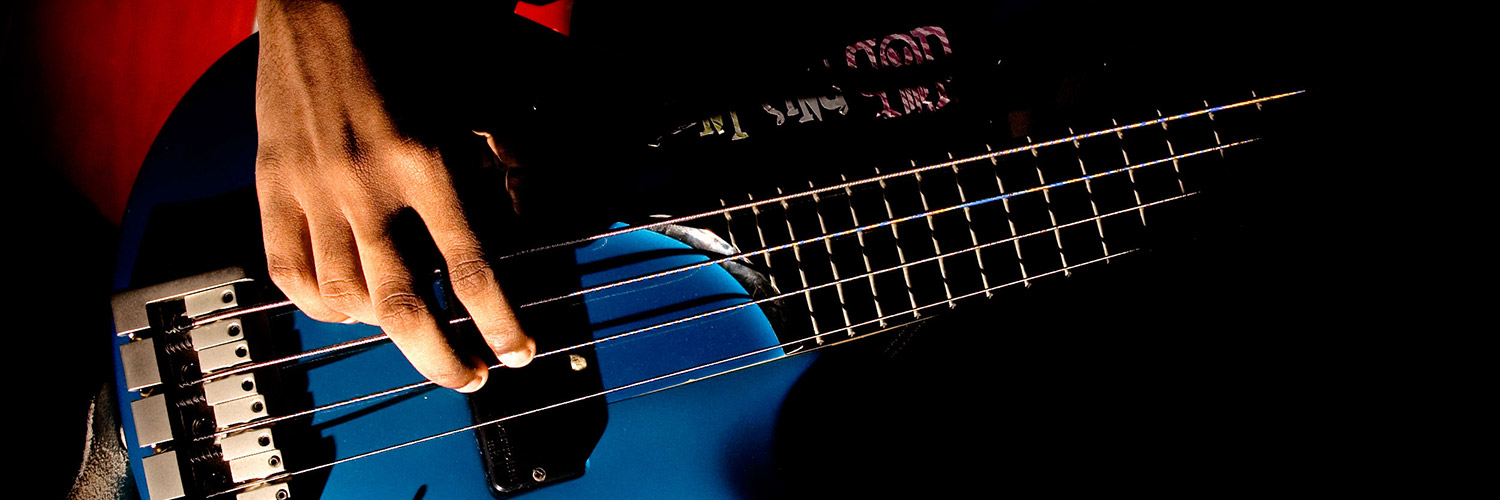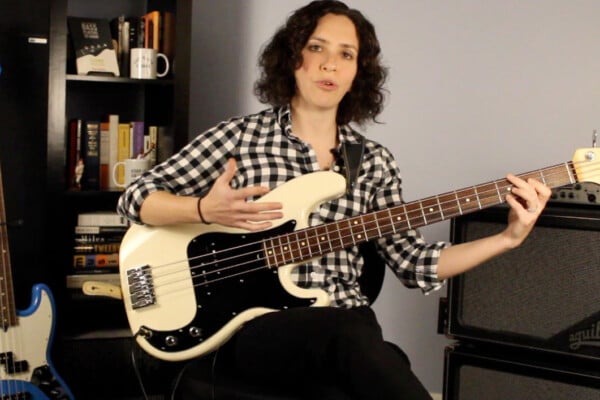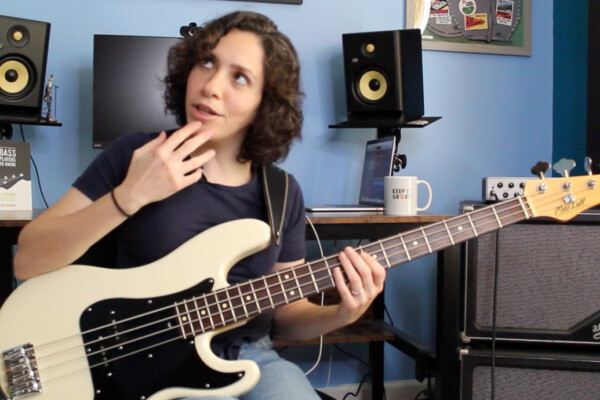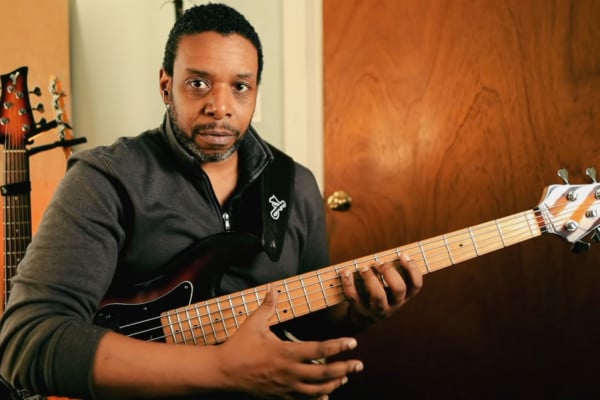Making the Three-Finger Technique Consistent on Bass

Q: I like to play with a three-finger technique (Billy Sheehan-style), and with it, I aim for consistency as I believe it can facilitate automaticity of my motor actions. I then don’t have to think about which finger I have to use next. Now, considering a rest stroke, I am in doubt what to do. So, for example, after having played the D string with my middle finger, and the next note is on the A string, do I play that note with my middle finger because it is already resting there, or do I play it with my index finger as that is the finger which is “next in line”. I can work around the issue by focusing on what feels right, but this often depends on the groove (for example, with a triplet groove, going ring-middle-index consistently feels nice), but this then sort of defeats the purpose of aiming for automaticity.
A: My general rule of thumb is that it’s best to practice any variation of a technique, as a means of fostering real, organic muscle-memory tendencies (even only seemingly semi-practical variations).
When thinking of your specific example, either approach would have a slightly different feel and sound, which means that either approach is valid and it’s more a matter of how you want the phrase to be articulated. Just as I might choose to play a note higher up on the fretboard because it sounds warmer and fatter than playing it down by the headstock, I occasionally choose different fingers or combinations of fingers because it makes more sense with how I’m hearing the line. It might not even be an aural thing so much as a feel thing, which then translates in a subtle shift in how the line actually sounds.
When I was fully immersed in developing my three-finger plucking technique, my methodology was one of exploring every possible variation.
Different plucking combinations in different rhythmic groupings:
- Playing scales and plucking each note 1-7 times while also varying plucking finger pattern.
- In other words, playing each note once, twice… up through seven times… and also using a variety of finger plucking patterns like this: (T=Thumb, I-Index, M=Middle. These are the only fingers I use but you can use your own variations based on your preferred techniques)
- T, I. (Grouping of 2)
- T, I, M (grouping of 3)
- T, I, M, I (grouping of 4)
- T, I, M, I, M (grouping of 5)
- T, I, M, T, I (variation of 5)
- T, I, M, T, I, M, I, M (grouping of 8)
And so on. I came up with a huge number of variables, trying to find different finger combinations that would lead to different groupings numbering 2-8.
I then applied those groupings to scales and arpeggios, changing the number of times I’d play each note.
I would also play around with rhythmic variations. Triplets, 6th notes, etc. (Playing 8th note triplets, with a four finger plucking pattern, for example). An example of all of that combined might look like this:
- Play 8th note triplets (3 strokes per beat)
- Use a plucking pattern grouping of 4 (T,I,M,I)
- Play the mode of your choosing, plucking each note only twice
- Advanced mode – play that same mode in broken 6ths to introduce string skipping in the mix (1,6,2,7,3,8,4,9, etc.)
Applying a somewhat systematic approach like that, AND trying to actively hit every variation leads you on a wild journey that will lead your plucking hand abilities to some pretty fantastic places, assuming that you practice properly; play slowly enough to foster proper muscle memory and technique (don’t practice playing too fast or too sloppily).
You get the idea. Through trying to explore every variation, I not only stumbled upon some neat tricks and ideas, but my plucking technique became supremely nimble and unconscious in its usage. My hand just does whatever needs doing to play what I want to play. My only real conscious considerations come via changing my technique to change the actual sound of what I play.
The same methodology can easily be applied to rest strokes, string skips, etc.
Become semi-proficient at a little bit of everything and then dig even further into those few things that really encompass the approach you plan on focusing on.
Happy shedding!
Have a question for Damian Erskine? Send it to [email protected]. Check out Damian’s instructional books, Right Hand Drive and The Improviser’s Path.



